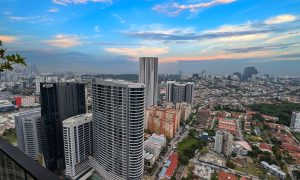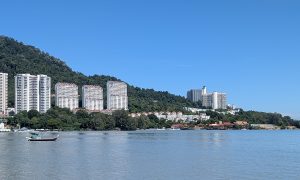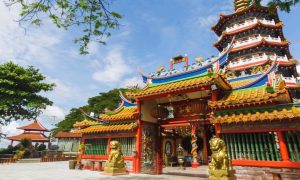From Vietnam’s lantern-lit alleys to Bali’s once-hidden beaches and Kyoto’s crowded shrines, Asia is seeing signs of a tourism backlash. Rising arrivals are testing the balance between growth and sustainability — and local communities are beginning to push back.
Increasingly during the last decade, and particularly since the end of the Covid pandemic, overtourism has often been framed primarily as a European concern. Cities like Venice, Barcelona, and Paris have made frequent headlines for the challenges posed by overwhelming visitor numbers, and even the tiny Greek island of Santorini — home to just 15,000 residents — receives a crushing two million tourists each year.
But the phenomenon is no longer limited to Europe. Across Asia, destinations from Japan to Indonesia are beginning to feel the same pressures, as historic streets, beaches, and cultural sites struggle to accommodate ever-growing crowds. And while destinations Kyoto and Bali often dominate the conversation, the rise of overtourism is now spreading to smaller towns, islands, and heritage sites across the region, signalling a rising concern that travellers, communities, and policymakers cannot ignore.
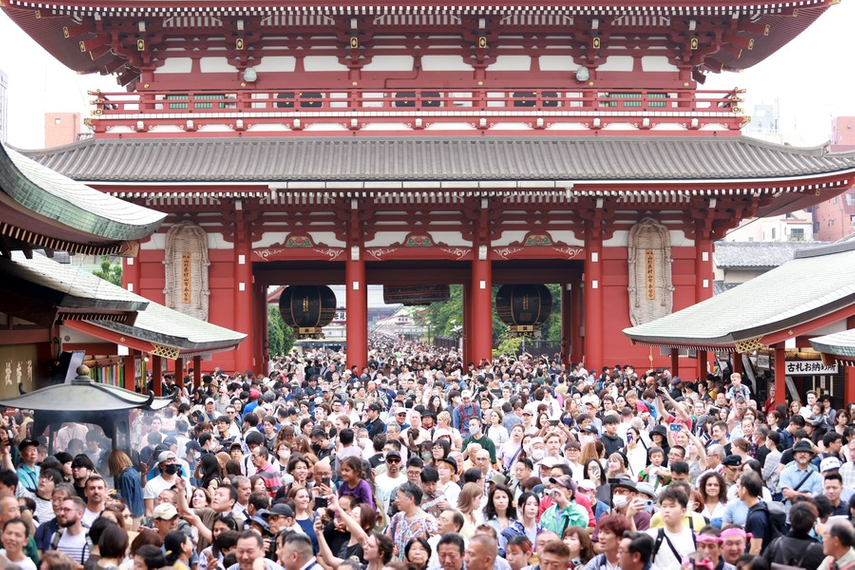
ASIA’S TOURISM BOOM FACES NEW PRESSURES
Asia’s fastest-growing tourist destinations are beginning to show troubling signs of strain. What once felt like a dream getaway — sun-drenched beaches, historic streets, and world-famous landmarks — can now resemble little more than a logistical headache: crowded shorelines, selfie queues stretching for hours, and traffic jams that are nobody’s idea of an enjoyable getaway. And increasingly, the very communities and environments that attract travellers are starting to feel the weight. While popular sites in Europe have contended with overtourism for many years, parts of Southeast and East Asia are now confronting the phenomenon in real time.
Gary Bowerman, a travel trends expert based in Kuala Lumpur, highlights several hotspots in an interview with CNN Asia. “Bali is definitely one,” he says. But the challenge extends beyond islands. “Kyoto in Japan… maybe Phuket, too,” he adds, emphasizing that the issue is not the size of the continent (after all, Asia is vast and largely uncrowded), but the concentration of visitors in just a handful of destinations. “It’s not a question of capacity alone; it’s about distribution. Millions of visitors funnel into small areas every year, often in peak season, which the infrastructure and local community cannot sustain.”
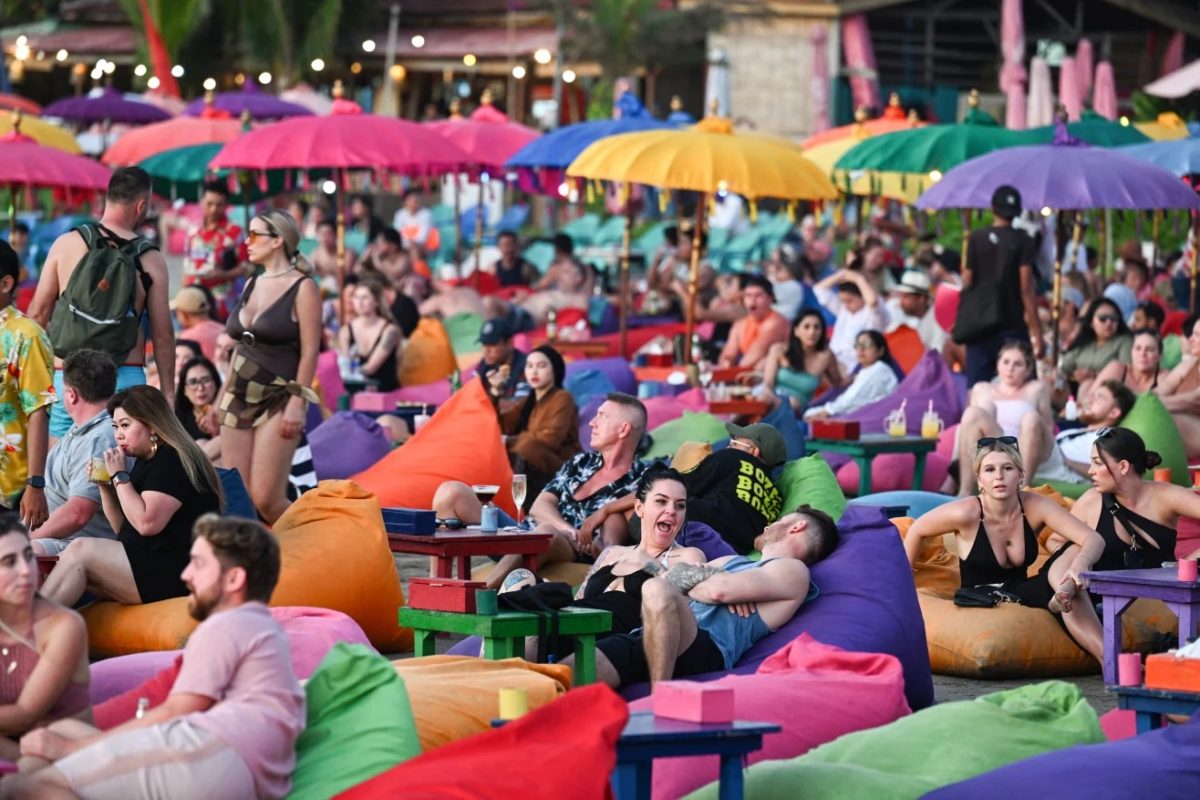
SOUTHEAST ASIA’S GROWING STRAIN
In the post-pandemic era, Southeast Asia has been experiencing rapid growth in visitor numbers. Vietnam, for instance, recorded a 21% increase in international arrivals in the first half of 2025. UNESCO-listed sites such as Hoi An and Ha Long Bay are particularly affected. In Hoi An, narrow lanes once lined with cafés and artisanal shops are increasingly dominated by pedestrian traffic. At Ha Long Bay, cruise boats carry so many visitors that the calm waters and iconic limestone karsts, once a hallmark of serenity, can feel crowded and chaotic.
Thailand faces similar pressures. Popular destinations such as Phuket contend with traffic congestion, water shortages, and waste management challenges. Even beaches once considered serene, such as Maya Bay — made famous by the 2000 Leonardo DiCaprio film The Beach — began to experience chaotic flotillas of day-trip boats during peak periods… and this was well before the pandemic! In some instances, tourists were reporting that they had to line up for over an hour just to catch a brief glimpse of the shoreline.
Fortunately, authorities were convinced to intervene, and as a result, Maya Bay has actually become a textbook case of what can happen when a famous destination is pushed past its limits – and what careful intervention can achieve. Once overwhelmed by as many as 5,000 to 8,000 visitors a day, the picturesque cove was closed in 2018 after its coral reef collapsed under the strain of constant boat traffic and unchecked footfall, with huge crowds of visitors largely unaware of the damage they were doing to the reefs beneath their feet. The pandemic ensured that the closure’s benefits were extended, giving the bay plenty of time to recover in the absence of humans. But a few still came: During the closure, marine scientists replanted more than 30,000 pieces of coral, and new infrastructure was built to manage crowds without damaging the ecosystem. Marine and island wildlife returned, and over the many months without tourists, Maya Bay and the broader Phi Phi islands ecosystem saw its balance restored, and its undeniable natural beauty reclaimed.
When the bay reopened in 2022, strict rules were introduced: boats must now dock at a jetty on the far side of the island, daily visitor numbers are capped, and swimming is banned to protect the recovering corals and the blacktip sharks that have come back to the bay. The turnaround has been significant, offering a rare success story in the region and a reminder that recovery is possible when limits are enforced – even at one of Thailand’s most famous attractions.

Environmental harm, however, is only part of the story. Nikki Scott, founder of Backpacker Network Southeast Asia, warns of broader impacts: “Destruction of the local environment, degradation of resources, and loss of culture to cater to tourism demands.” She adds that overtourism can fundamentally alter a place — not only in appearance but in how residents live. Traditional livelihoods can be displaced, neighbourhoods transformed, and local customs reshaped to cater to visitor expectations. (Bali is, most regrettably, a notable example of this.)
Some destinations have acted decisively. The Philippines famously closed Boracay for six months in 2018 to rehabilitate the environment and implement infrastructure improvements. When it reopened, strict visitor limits were introduced to maintain balance. Thailand has recently been experimenting with seasonal closures at Maya Bay to allow nature a chance to “breathe” and recover. Yet experts caution that physical upgrades alone are insufficient. Effective change requires smart policies, community consultation, and enforceable visitor caps. It’s not easy, and it requires a careful balancing act.

KYOTO: THE OVERTOURISM POSTER CHILD
Kyoto has become the symbol of overtourism in Asia. The alluring Japanese city welcomed 10.88 million foreign visitors in 2024, contributing to a total of 56.06 million trips when including domestic travel. Tourists generally report high satisfaction — over 90% in a recent survey said they enjoyed historic temples and shrines — but residents increasingly feel the strain. Overcrowded buses, massively congested alleyways, and traffic jams around cultural sites disrupt daily life. A survey of locals found that roughly 90% expressed frustration with tourism’s impact.
Kyoto has introduced measures to address the problem. Tourists are now banned from private alleys in the Gion geisha district, with fines of ¥10,000 (about RM260) for trespassing. Additionally, a lodging tax of up to ¥10,000 per night for premium accommodations is set to take effect in March 2026. However, experts note that the city still lacks enforceable capacity limits or physical barriers, making it difficult to reconcile resident well-being with tourism income. Another very real consideration is that adding taxes or fees simply results in excluding less affluent visitors, and may or may not help sustainably reduce the numbers overall.
Local voices emphasize the human dimension. Shopkeepers and residents in Gion report that while tourism supports their businesses, the constant influx of visitors leaves little room for everyday life. “We appreciate the tourists, but we also need space to live,” says a local resident. Cultural traditions, once central to the city’s character, risk being reduced to photo opportunities rather than meaningful experiences. Once again, even for residents as well as policymakers, balancing the benefits of tourism with the pitfalls can be a real challenge.
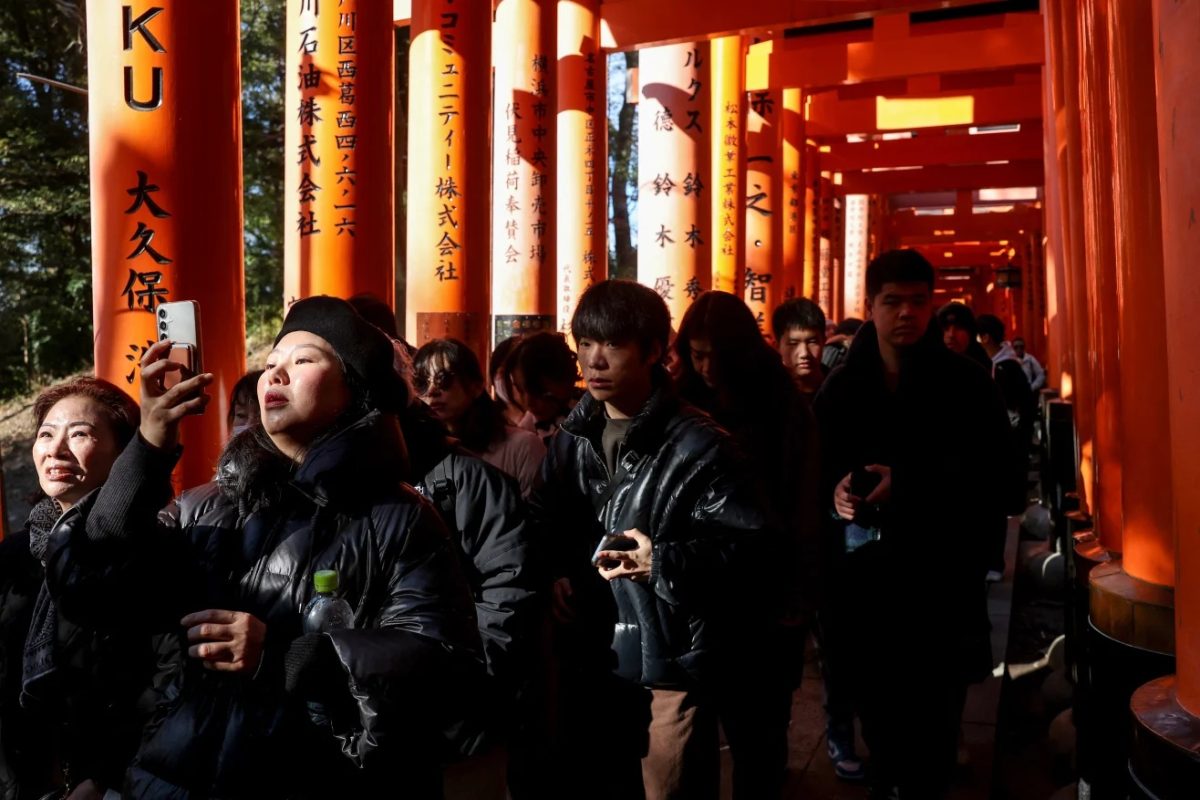
EXPANDING THE CONVERSATION ACROSS ASIA
Of course, the challenges overtourism brings are not limited to islands and historic cities. Popular attractions in Indonesia, Malaysia, Vietnam, and Japan face similar issues, ranging from traffic bottlenecks to overtaxed public services. Even relatively smaller cities, such as Luang Prabang in Laos or Hoi An’s surrounding towns, have reported rising visitor numbers that outpace local capacity.
Experts stress that the economic benefits of tourism must be weighed against long-term sustainability. Governments in Malaysia, Indonesia, Vietnam, Thailand, and Japan view tourism as a critical growth driver — supporting jobs, foreign investment, and national branding. Yet growth without planning can damage both the environment and community well-being.
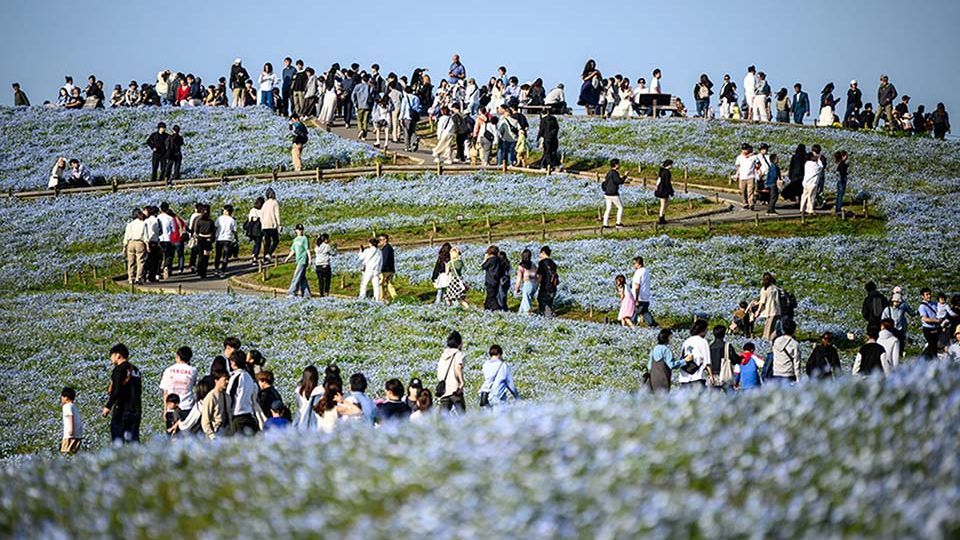
COMMUNITIES ON THE FRONTLINE
Local communities often bear the brunt of overtourism, confronting its impact in daily life. In Hoi An, narrow streets that once hosted local markets and artisan workshops are now dominated by hordes of visitors. Shopkeepers note that traditional routines, from market supply cycles to family gatherings, are increasingly adjusted around tourist schedules. Pedestrian congestion has become a near-daily constant, and festivals that once reflected local culture now cater as much to visitors as to residents.
Phuket offers another perspective. Long-term residents point to environmental strain alongside infrastructure challenges. Coral reefs near popular beaches have suffered from boat traffic and snorkelling excursions, while freshwater shortages affect both communities and resorts. Even waste disposal has become a chronic issue during peak season, with landfill and recycling systems struggling to keep pace. Local environmental advocates emphasize that without community involvement, infrastructure upgrades alone cannot sustain tourism growth. “Tourism can be a lifeline,” says one Phuket resident, “but only if residents have a say in how it grows and how resources are shared.”
Kyoto illustrates the social side of the issue. In districts like Gion, residents contend with constant foot traffic in their alleyways, noise from crowded temples, and buses packed beyond capacity. While tourism undeniably fuels the local economy, many feel their neighbourhoods have been reshaped primarily for visitor convenience. Traditional cultural practices risk becoming performative — staged photo opportunities rather than lived experiences — and residents sometimes feel their voices are sidelined in policymaking decisions.

Across the region, these examples underline a shared reality: sustainable tourism, beyond being a well-worn hospitality buzzword already, is not simply about limiting numbers or building infrastructure. It requires listening to the people who live where visitors travel. Engaging local communities in decision-making ensures that tourism benefits are balanced with social and environmental well-being. When residents participate, destinations can do better at retaining authenticity, and travellers gain richer, more meaningful experiences — moments that cannot be replicated in a crowded, homogenized tourist space.
SMARTER STRATEGIES FOR SUSTAINABLE TOURISM
Travel and tourism specialists advocate for multi-pronged strategies. Capacity limits, smart crowd monitoring via emerging technologies, and community-led planning are key measures. Some destinations are beginning to shift promotional campaigns toward lesser-known locations to ease pressure on iconic sites, encourage off-peak travel, and lengthen stays outside main hubs.
For example, in Japan, campaigns increasingly highlight rural prefectures and smaller towns to spread tourist flows. In Vietnam, authorities are exploring boat limits in Ha Long Bay and timed-entry systems for Hoi An’s pedestrian streets. These approaches aim to maintain visitor satisfaction while protecting natural and cultural assets.
For travellers, the message is simple: explore beyond the well-trodden path. Venture into lesser-known neighbourhoods, interact with local communities, and resist the urge to tick off every “must-see” site. These detours often yield the most memorable and authentic experiences, from sampling local cuisine at a family-run eatery to joining traditional craft workshops that rarely appear in guidebooks.
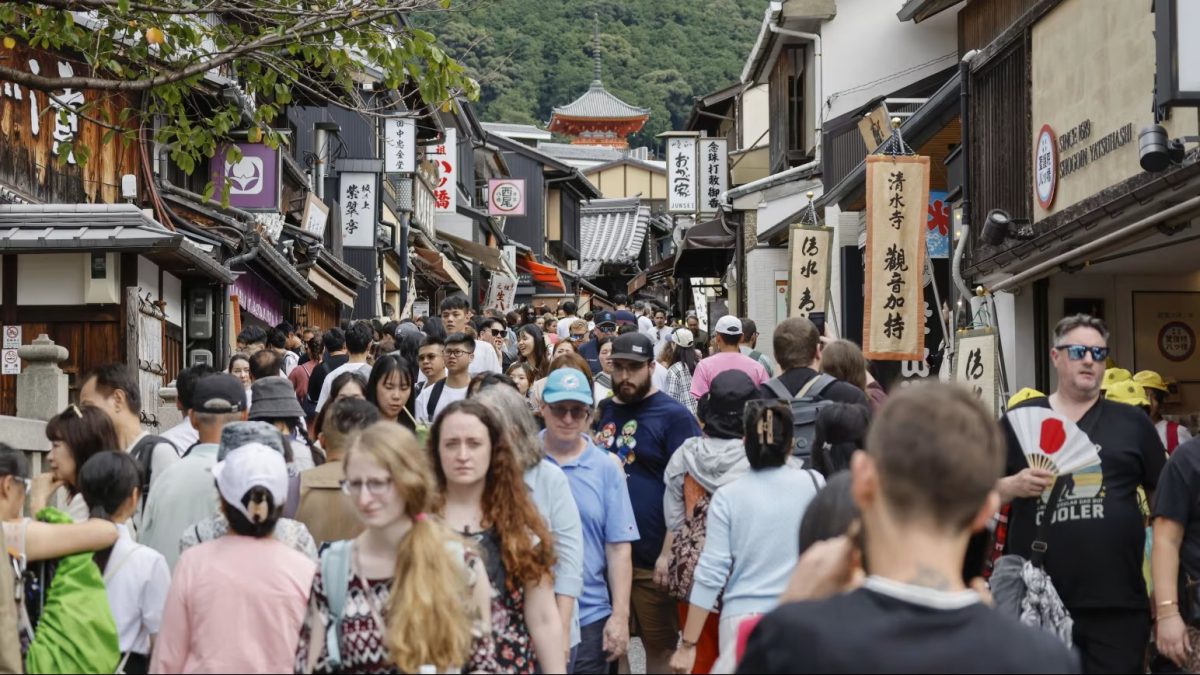
THE ETHICS OF OVERTOURISM
Overtourism is more than just an environmental or economic issue — more some, it is a moral question. How much tourism is acceptable? When does it become too much? What does “sustainable tourism” even mean in a specific destination? Choices made by governments, communities, and travellers alike will shape Asia’s tourism landscape for decades. Left unchecked, visitor pressure can degrade heritage, disrupt daily life, and erode cultural identity. Managed wisely, tourism can support economic growth while preserving the very places that draw visitors in the first place.
Experts argue that responsible travel requires awareness and action. Understanding the impact of one’s visit, supporting local businesses, and following rules designed to protect communities are part of the equation. As people in the industry say, tourism is not merely about numbers; it is about quality — ensuring that destinations retain their character and integrity while offering meaningful experiences to those who arrive. Some do a better job of this than others, while too many still seem to only chase the numbers and the money that comes with them.

Ultimately, the challenge for Asia is to balance ambition with stewardship. The region must navigate rising visitor numbers without compromising the environment, culture, or quality of life for residents. For tourists, there is an opportunity to move from passive sightseeing to active participation in the life of a destination — a shift that can turn the pressures of overtourism into a shared commitment to sustainable, thoughtful exploration.
Asia’s overtourism story is still unfolding. Policymakers, communities, and travellers must collectively decide whether the future of travel will be about more — or better.






